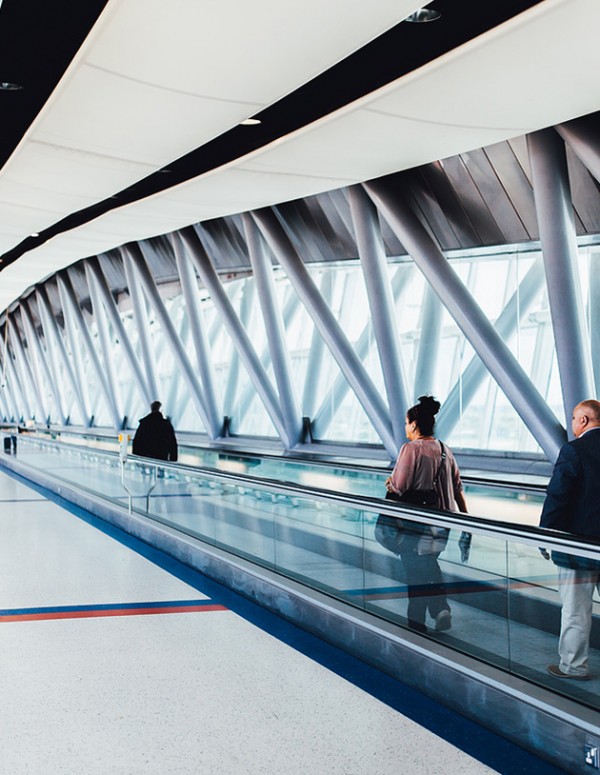Everything You Need to Know About Moving Walkways: A Convenient Solution for Modern Spaces
 Imagine walking through a busy airport or a large shopping mall, and instead of trudging along with tired feet, you're effortlessly gliding forward. This is the magic of a moving walkway. These continuous, automated conveyors are transforming the way we navigate long distances in high-traffic areas. Whether you're at a train station, airport, or even a theme park, moving walkway are making travel more efficient and comfortable.
Imagine walking through a busy airport or a large shopping mall, and instead of trudging along with tired feet, you're effortlessly gliding forward. This is the magic of a moving walkway. These continuous, automated conveyors are transforming the way we navigate long distances in high-traffic areas. Whether you're at a train station, airport, or even a theme park, moving walkway are making travel more efficient and comfortable.At Fujilf, we specialize in providing high-quality, innovative moving walkway solutions designed to meet the needs of busy spaces in China and beyond. Let's explore the benefits, features, and applications of moving walkways and how they’re improving the modern built environment.
What Is a Moving Walkway?
A moving walkway, also known as a travelator or moving sidewalk, is a type of conveyor system designed to transport people across flat or inclined distances. Similar to escalators but without steps, moving walkways are typically found in large public spaces like airports, shopping centers, exhibition halls, and transit stations.These systems are powered by electric motors that drive the walkway, helping pedestrians move more efficiently, especially in areas with high foot traffic. Unlike traditional walkways where people have to walk at their own pace, moving walkways offer a smoother, faster experience by carrying individuals at a consistent speed.
Key Benefits of Moving Walkways
1. Enhanced Mobility in Busy LocationsIn bustling areas like airports or train stations, where people are constantly in motion, moving walkways provide a quicker way to travel from one place to another without expending unnecessary energy. They also assist people with mobility challenges, offering a more accessible alternative to long walks.
2. Space Optimization
Moving walkways can be installed in spaces where traditional escalators or elevators might not be viable. Their compact design and ability to move a large number of people at once make them a smart solution for high-traffic areas that require effective space usage.
3. Improved Flow and Reduced Congestion
Moving walkways significantly reduce the congestion of pedestrian traffic, helping maintain smoother, faster flows of people in areas with constant movement. This improves overall efficiency and helps avoid bottlenecks, making the space more user-friendly.
4. Energy Efficiency
Modern moving walkways, especially those from Fujilf, are designed with energy efficiency in mind. They use advanced motor technology to consume less power while providing optimal performance, thus contributing to sustainability in commercial buildings.
Where Are Moving Walkways Used?
Moving walkways are incredibly versatile and can be found in various settings:Airports: To help passengers cover long distances quickly between terminals or gates.
Shopping Centers: To allow shoppers to comfortably travel between different floors or areas of a mall.
Stadiums and Exhibition Centers: To move large crowds efficiently between entrances and seating areas.
Train Stations and Metro Systems: To assist commuters in getting from one platform to another without fatigue.
Moving Walkways Frequently Asked Questions (FAQ)
1. How fast do moving walkways travel?Moving walkways typically travel at speeds of 0.3 to 0.6 meters per second (1 to 2 feet per second), which allows for smooth movement without being too fast for passengers to board or disembark safely.
2. Are moving walkways energy efficient?
Yes! Modern moving walkways are designed to be energy-efficient, using advanced motors and systems that reduce power consumption, making them a sustainable option for large buildings and transit systems.
3. Can moving walkways be installed in outdoor areas?
While most moving walkways are designed for indoor use, certain models can be installed outdoors, especially in large parks, airports, or shopping districts. These systems are built with weather-resistant materials to withstand outdoor conditions.
4. Are moving walkways safe to use?
Yes, moving walkways are equipped with safety features such as handrails, emergency stop buttons, and anti-slip surfaces. However, passengers should remain cautious and hold onto the handrails, especially in high-traffic areas.
5. What is the maintenance required for moving walkways?
Like any mechanical system, moving walkways require regular maintenance, such as lubrication, cleaning, and inspections for wear and tear. Proper upkeep ensures they run smoothly and safely for long periods.
Conclusion: A Step Toward the Future of Convenience
Moving walkways are revolutionizing the way we navigate large spaces, offering a convenient, energy-efficient solution to move people quickly and safely. Whether you’re an airport manager, mall owner, or city planner, investing in a high-quality moving walkway system from Fujilf can improve the overall flow of your space while enhancing user experience.Ready to make your space more efficient? Get in touch with Fujilf today to explore our innovative moving walkway solutions and experience seamless transportation for your visitors!











